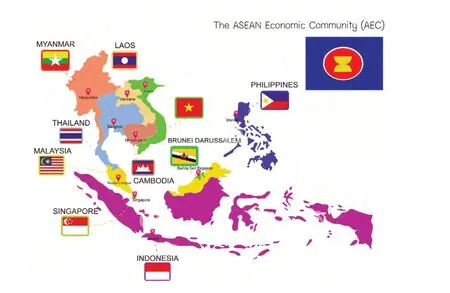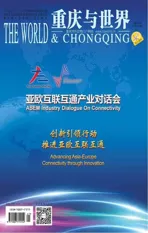互联互通:振兴亚欧关系的秘诀
2015-02-14
在日益错综复杂且相互依赖的世界中,想要占据一席之地,互联互通必不可少。这对于个人、机构、公司、各大洲、地区和国家来说,都是不争的事实。社交媒体网站的发展便印证了个人与集体间日益紧密的联系。
缺少与外界保持联接会导致影响力的缺乏。也就是说,没有发言权,没有立场也没有机会产生影响力。这对于个人而言是这样,对于国家而言亦然。在风云变幻的21世纪,那些具备影响力的国家就是那些与世界其他地区互联互通的国家。
因此,欧盟才急于打破其28个成员国间的贸易、服务及商品流通壁垒。也正因为如此,美国和欧盟正协商签署野心勃勃的跨大西洋贸易与投资伙伴关系协定(TTIP)以促进贸易。同时美国还希望在年底前签订跨太平洋战略经济伙伴关系协定(TPP)。
亚洲各国将备受关注的互联互通计划提上议程。由东南亚国家联盟(ASEAN)提出的“互联互通总体规划”在涵盖范围和内容上都非常引人瞩目。当然,中国“一带一路”战略的提出也在世界范围内掀起浪潮。
这些举措表明,互联互通能够也的确具有不同形式。互联互通的第一个重点就是交通——即修路、建桥、铺设铁路以及开拓航海线和航线。其次是数字网络。

互联互通也指建立一个网络,将人们、学校、高校、媒体、公民社会组织、公司、政府及机构联系起来。
互联互通能够促进贸易投资,提高就业,惠及经济。同时也可促进创新,增进相互理解。当然,也能促进和平稳定。
因此,人们欣喜地看到亚欧间的互联互通正在引起重视。它成为了亚欧会议(ASEM)的重点议题,也被广泛认为是在该论坛成立第三个十年中,重振峰会的重要发力点。
第一届亚欧首脑会议于1996年在泰国曼谷举办,与当年相比,或是与十年前相比,如今亚欧地区间的贸易、商业、安全与文化交流更为密切。亚欧会议即将于明年蒙古承办第11届首脑会议期间迎来成立20周年,互联互通预计将成为加强亚欧合作的重要引擎。
亚欧经济上的互联互通已经得到发展。2012年的亚欧总贸易额约为13.7万亿欧元,亚洲已成为欧盟的主要贸易伙伴,占欧盟对外总贸易额的三分之一,超过北美自由贸易区(NAFTA)。欧洲在亚洲的对外投资超过总投资额的四分之一,同时,亚洲的迅速崛起的跨国公司也正在欧洲寻求商业机会。
亚欧双方希望协商签订自由贸易协定和投资协定,反映了其日益紧密的联系。欧盟和中国目前正在磋商双边投资协定。欧洲与韩国、新加坡签订的自由贸易协定以及与日本、印度和一些东盟国家签订的类似协定都在加强亚欧关系中起到了重要作用。
除了贸易和经济领域,亚欧其他诸多领域的合作也加强了双方的联系。亚欧多国政府部门和机构间频繁对话,内容涉及气候变化、流行病、非法移民、海上安全、城市化、绿色发展等领域。这表明各国都意识到,要解决21世纪的各种问题,必须加强全球治理,如若不行,则通过跨国和跨地区结盟,实现联合治理。
重要的是,互联互通是亚欧会议的流行词。去年在米兰召开的亚欧首脑会议强调了亚欧互联互通(包括数字联通)的重要性。各国领导人强调加强联系能够促进经济繁荣与可持续发展,推动人民、贸易、投资、能源、信息、知识和创意方面的自由无缝往来,并加强制度关联。
会议敦促建立一个综合、可持续、安全、高效、便捷的航空、海上及陆地运输系统,其中包括亚欧地区内部及亚欧地区间的联合运输解决方案。在欧盟统一市场的管理及东盟互联互通总体规划的实施等方面,会议还强调了在有着共同利益的领域进行实践和经验交流的有用性。
在里加召开的亚欧交通部长会议讨论了在亚欧间发展交通网络的共同愿景,并强调了两个地区间的互联互通对于实现经济繁荣和可持续发展的重要性。会议特别强调了铁路联接的重要性。
当然,关于亚欧互联互通的讨论主要围绕中国国家主席习近平提出的丝绸之路经济带和21世纪海上丝绸之路(合称“一带一路”)展开。“一带一路”旨在建立两条辐射多国的经济走廊,为中欧双方在基建、贸易投资、以及能源与资源方面的后续合作创造新机遇。
这项倡议也引起了很多质疑。欧洲要如何从丝绸之路经济带的建设中获益呢?中欧基建及互联互通政策间的协同效应有何潜力?哪些行业将从该项合作中获益最多?亚投行将在“一带一路”倡议的融资中扮演何种角色?青年和妇女将在亚欧互联互通的推动中扮演何种角色?
亚欧会议只是促进基建互联互通还是也能推动制度及人民互联互通?同在里加召开的亚欧教育部长会议中,这些疑问得到了回应。会议强调了两地区在学生、教师、研究人员、创意及知识交流等领域之合作的重要性。
最后,虽然加强互联互通能够促进商业和贸易发展,但随之而来的安全隐患,如武器、毒品的跨国交易及跨国的恐怖活动也亟待解决。
Getting connected: the secret to reviving Asia-Europe ties

To count in an increasingly complex and interdependent world,you have to be connected.This is true for individuals,institutions,companies,continents,regions and countries.The growth of social media sites is testimony to the increased connectivity of individuals and groups.
No connections translate into lack of influence.It means no voice,no role,no chance to make an impact.What’s true for individuals is also true for countries.Nations which have clout in this rapidly-changing 21st Century are those that are connected to the rest of the world.
That’s why the European Union is busy breaking down internal barriers to trade,services and the movement of goods among its 28 member states.It is also the reason that the EU and the United States are negotiating an ambitious and tradeboosting Transatlantic Trade and Investment Partnership (TTIP) and it is also why the US is also hoping to conclude the Trans-Pacific Partnership (TPP) negotiations by the end of the year.
Asians are embarked on a headline-grabbing connectivity agenda of their own.The Connectivity Masterplan drawn up by ASEAN (Association of Southeast Asian Nations) is impressive in its scope and content.And of course China’s “One Belt,One Road”initiative is making waves worldwide.
As these different initiatives illustrate,connectivity can and does take many forms.The first focus is clearly on transport – building roads,bridges,railways as well as maritime and air routes.There are also digital networks.
Connectivity is also about building networks that connect people,schools and colleges,media,civil society organisations,businesses,policymakers and institutions.
Being connected is good for the economy by helping to boost trade and investments and create jobs.It is good for creativity and innovation.It is good for fostering mutual understanding.And of course it is very good for peace and stability.
And that’s why is encouraging to see the attention now being paid to Asia-Europe connectivity.The topic is high on the agenda of ASEM (Asia Europe Meetings) and is being widely recognised as a vital element in efforts to revive ASEM for its third decade.
Certainly,compared to 1996 when ASEM was first launched in Bangkok in 1996 or even ten years ago,there is now a stronger EU-Asian conversation on trade,business,security and culture.As ASEM celebrates its 20th anniversary in Mongolia next year,connectivity is expected to be an important driver for further Asia-Europe cooperation.
Asia-Europe economic connectivity has grown.With total Asia-Europe trade in 2012 estimated at €1.37 trillion,Asia has become the EU’s main trading partner,accounting for a third of total trade and surpassing the North American Free Trade Agreement (NAFTA).More than a quarter of European outward investments head for Asia while Asia’s emerging global players are seeking out business deals in Europe.
The increased connectivity is reflected in the mutual Asia-Europe quest to negotiate Free Trade Agreements and investment accords.The EU and China are currently negotiating a bilateral investment agreement.The FTAs concluded by the EU with South Korea and Singapore and similar deals under negotiation with Japan,India and individual ASEAN countries are important in consolidating EU-Asia relations.
Beyond trade and economics,Asia and Europe are linked through an array of cooperation accords.Discussions on climate change,pandemics,illegal immigration,maritime security,urbanization and green growth,among others,are frequent between multiple government ministries and agencies in both regions,reflecting a growing recognition that 21st century challenges can only be tackled through improved global governance and,failing that,through “patchwork governance”involving cross-border and cross-regional alliances.
Importantly,connectivity is the new ASEM buzzword.The significance of Asia-Europe connectivity – including digital connectivity - was underscored by the ASEM summit in Milan last year,with leaders underlining the contribution increased ties could make to economic prosperity and sustainable development and to promoting free and seamless movement of people,trade,investment,energy,information,knowledge and ideas and greater institutional linkages.
The summit urged the establishment of an integrated,sustainable,secure,efficient and convenient air,maritime and land transportation system,including intermodal solutions,in and between Asia and Europe.It also noted the usefulness of an exchange of best practices and experiences on areas of common interest,relating for example to the governance of the EU Single Market and the implementation of the Master Plan on ASEAN Connectivity.
A meeting of ASEM transport ministers held in Riga discussed a common vision for the development of transport networks between Asia and Europe and emphasized the significance of connectivity between the two regions for achieving economic prosperity and sustainable development.The importance of railway links was especially underlined.
Certainly,much of the talk on Asia-Europe connectivity is centred on Chinese President Xi Jinping’s plans for the Silk Road Economic Belt and a 21st Century Maritime Silk Road (termed together “One Belt,One Road”) aimed at building two economic corridors with important development implications for many nations,creates new opportunities for further China-EU cooperation in areas such as infrastructure,trade and investment as well as energy and resources.
The initiative raises many questions: How will Europe benefit from the construction of the Silk Road Economic Belt? What is the potential for synergies between the Chinese and European infrastructure and connectivity policies? Which sectors are likely to benefit most from such cooperation? What will be the role of the Asian Infrastructure Investment Bank (AIIB) in financing the “One Belt,One Road”initiative? What is the role of youth and women in the drive to connect Asia and Europe?
Is it only about infrastructure or can ASEM also encourage institutional and people-to-people connectivity? The answer was given at a meeting of ASEM education ministers – also in Riga – which highlighted the importance Asia-Europe cooperation in areas like mobility of students,teachers,researchers,ideas and knowledge.
And finally,while increased connectivity would offer opportunities for business and trade,the darker security implications linked to the cross border movement of arms,drugs and terrorists also need to be addressed.
